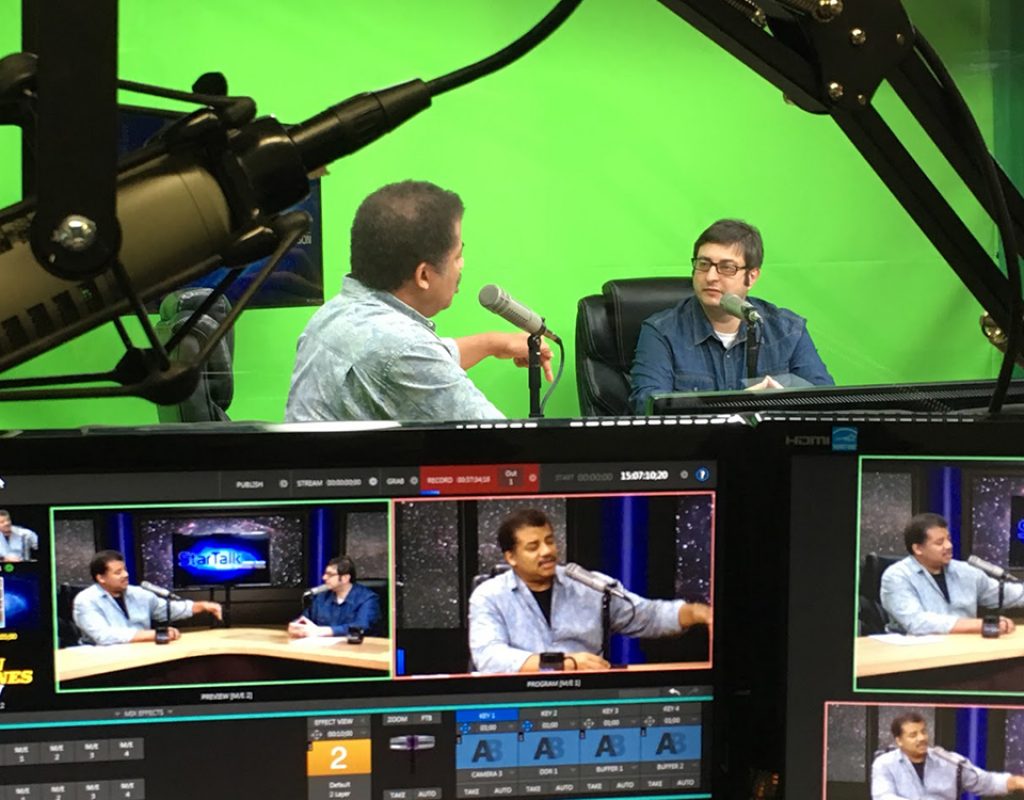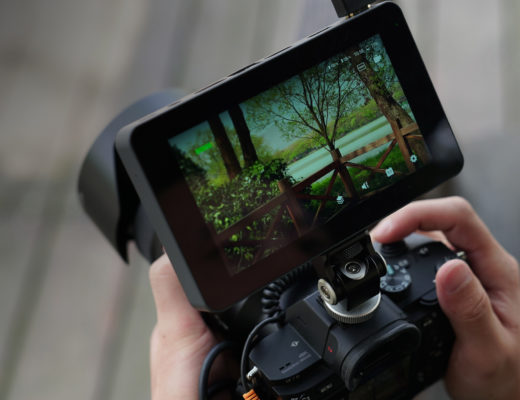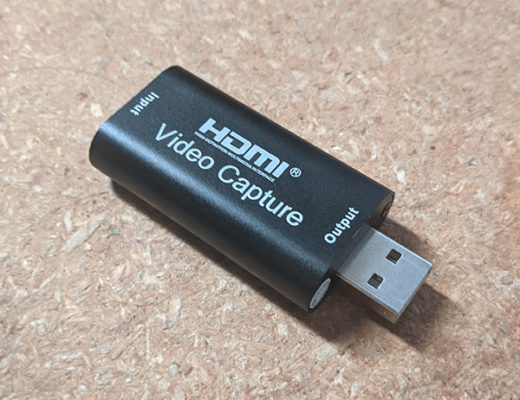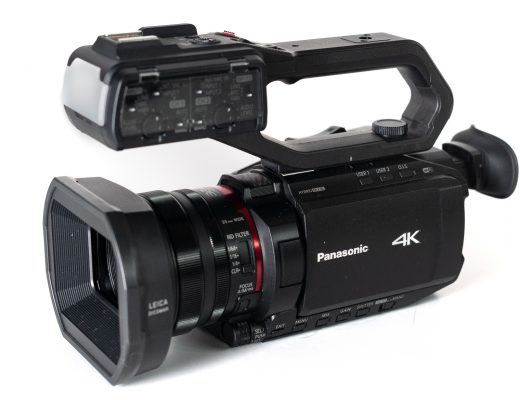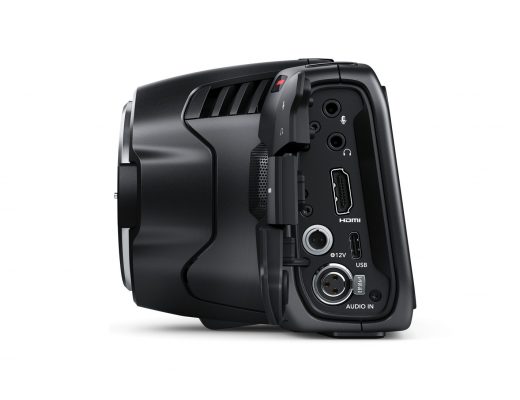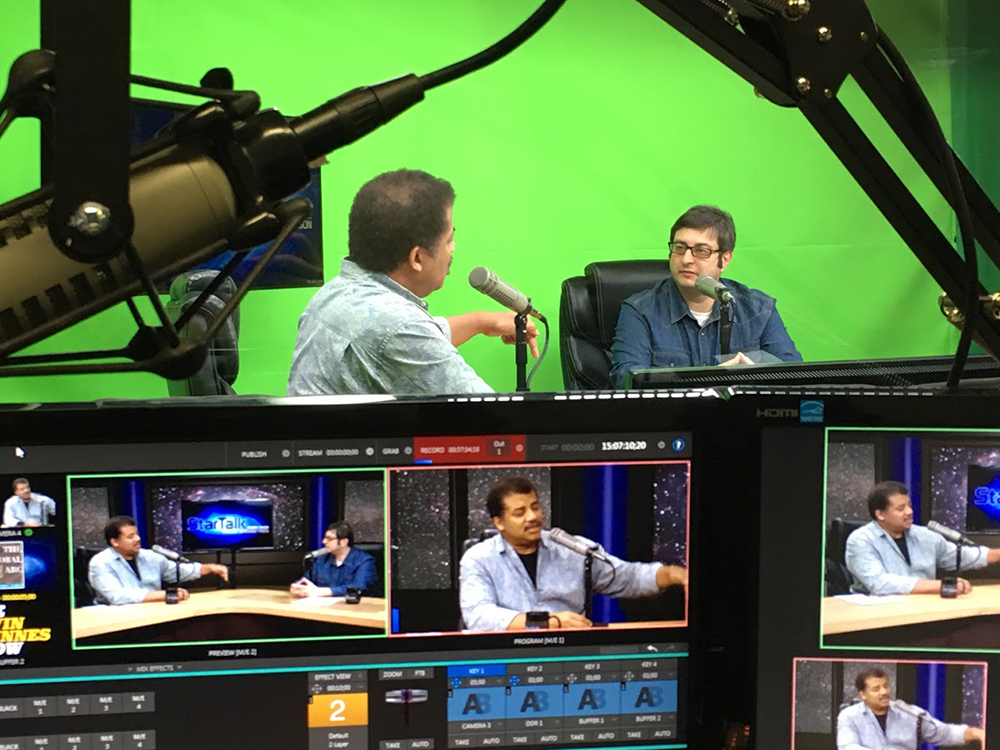 To get a better sense of whether or not the “Solo” live streaming device from LiveU was as reliable and easy to use as many people have claimed, we put the unit in the hands of one of our writers to test it out. In his review, Kenny McMillan mentioned that the unit performed admirably and that the “simplicity of the Solo makes it hard to screw up”. Others have chimed in to say how much they like the product.
To get a better sense of whether or not the “Solo” live streaming device from LiveU was as reliable and easy to use as many people have claimed, we put the unit in the hands of one of our writers to test it out. In his review, Kenny McMillan mentioned that the unit performed admirably and that the “simplicity of the Solo makes it hard to screw up”. Others have chimed in to say how much they like the product.
The technical challenges associated with going live are often the top concern for content creators of all types and sizes, and they certainly were for Kenny. However, the biggest issue he encountered was actually a legal one, since his stream was taken down a week after going live. He was able to showcase the quality of the stream in another video, but the experience got us thinking about the non-technical considerations that content creators should be focused on when live streaming.
To get a better sense of the legal, creative and practical issues that creators should think about when going live, we got in touch with the team at LiveU to talk through all of these issues and more. LiveU’s VP of Engineering, Daniel Pisarski and Product Manager, Christopher Perry connected with us to run through all of the questions we had around best practices to ensure a stream won’t be taken down, as well as how the Solo is being used in a variety of ways and places, some of which are pictured right here.
ProVideo Coalition: Our review detailed the technical logistics associated with utilizing the Solo, and suffice to say, it’s pretty easy to use. Is that the general feedback you’ve gotten from users?
LiveU Team: It is, and succeeding with that ease of use issue was a big goal in the way we designed Solo. It’s a continuing process though, which is part of the reason we’re still making changes to further improve usability. This year we’ll launch a new portal, and it’s got some major new features like our cloud graphics along with other usability improvements.
 Any details you can share about those other usability improvements?
Any details you can share about those other usability improvements?
Some of the things we’re looking at doing to enhance the usability even more are displaying more information on one page in the portal so you don’t have to click around as much to find the info you’re looking for to change settings. We want to consolidate the user experience even more.
Another thing that we’re doing is more of an enhancement in functionality, as we want to provide more information with things like graphs of how the bandwidth is going. People wanted to be able to see these kinds of details in order to make real-time assessments, and we’re set to make that information readily available. These are the kinds of things that indirectly impact usability, but nonetheless contribute to the simplicity of the Solo that so many users appreciate.
That ease of use isn’t just about Solo hardware though, is it? Users have to select the destination of their live stream when the device is registered, so what can you tell us about the efforts to make that process easier, especially with Facebook Live?
We got to know the Facebook Live team early on. Around the time of the Facebook Live launch we became a Facebook encoding partner for the Facebook Live API, and that’s been great because it allowed us to be involved with the development of some of their new features.
It’s been a very valuable relationship to us, and it’s been valuable to our end users too because we have a lot of Facebook functionality in terms of control of the posts. We definitely have more planned for this functionality, all of which is a result of that direct relationship with Facebook.
I want to move beyond the technical details, and get into some of the creative and even legal details that creators need to keep in mind when live streaming. First and foremost, Kenny himself ran into an issue where his video was taken down because the band he recorded was doing a cover. What do creators need to keep in mind when it comes to considerations around a video potentially being taken down?
Each one of the social platforms has something that they call a “best practices” guide that lays out the terms of service that they expect users to comply with. In order to help with awareness for these sorts of documents, we link to those best practices from the “make a new post” in the Solo portal because we want users to be aware of some of those restrictions for the exact reasons you’re asking about.
Those documents outline some less obvious restrictions like presenting recording content as live, and of course they also detail the more obvious restrictions associated with copyrighted material. All of those social platforms want user generated content to be truly user generated, which means it can’t contain audio or visual content that belongs to someone else.
 Limitations around how copyrighted material can and can’t be used without the specific permission of a copyright holder are beyond what we can adequately cover here, although it’s a topic PVC has touched on. How do platforms like YouTube and Facebook deal with these violations and potential violations?
Limitations around how copyrighted material can and can’t be used without the specific permission of a copyright holder are beyond what we can adequately cover here, although it’s a topic PVC has touched on. How do platforms like YouTube and Facebook deal with these violations and potential violations?
There’s a whole system about how copyright holders issue takedown requests and how sites have to enforce it. They’re under scrutiny about it from the FCC, and that’s why YouTube and Facebook have algorithms in place that look at the content being uploaded which can actually identify that a piece of content is something someone else already posted and has claimed the copyright on, or it’s well known copyrighted material such as a song.
These protection measures go all the way back to the early days of YouTube, when people had a very generous interpretation of the concept of “user generated content”. Some people thought their recording of a popular song meant it was user generated and they’d be entitled to compensation for advertising sold against that recording, and of course there was pushback from a variety of entertainment industries. That interpretation doesn’t line up with the reason the copyright exists in the first place.
That speaks to the fact that copyright violations and restrictions shouldn’t be new information to content creators, but going live represents additional considerations to take into account, doesn’t it?
Yes, and it can be an issue for creators who don’t anticipate that it’s something they even need to be thinking about. One of the more severe examples we’ve heard about is how this sort of thing can be an issue at sporting events.
If someone is live streaming a high school football game, they probably assume they’re not going to have to deal with any sort of copyright flag or restriction. But if the venue plays a couple bars of a popular song, which they’re allowed to do, that could cause your recording to eventually get taken down, or even immediately blocked. Sometimes they don’t even allow the live broadcast to finish before they take it down.
What can creators do if that happens?
In those cases, some of the things we do on our side are to look for any real-time occurring errors on the Facebook side and report that information in the portal. If your stream got cut off because of copyright violation, we will report that the Facebook API told us it was due to copyright in the portal.
It can and does happen where the live broadcast will be able to be completed, but then the recording is taken down. For those cases, Facebook and YouTube have a portal where you can go in and manage your claim to the copyright. If you own that material or have rights to it, you can go in and upload information to show them evidence that you’re the copyright holder or that you have permission to use it.
Is that something LiveU or LiveU Support can assist with?
That’s not a process we can help with directly. That’s a process between the creator and the social platform. We’ve heard it’s a very important process to go through if you’re doing frequent broadcasts that involve materials that might be mistaken as copyrighted materials though.
People have opened tech support cases with us because something got taken down, but we have to tell them to contact the network because it’s something they did, as it’s not a technical issue. If people want to find out why something was taken down and fight to have it restored that’s something they can do, and the platforms will make the reasons behind why something was taken down available. They don’t do that proactively, but if you contact them, they’ll give you that info.
 Is there a specific type of content or creator that runs into this issue more than others?
Is there a specific type of content or creator that runs into this issue more than others?
High school and college sports are a couple of areas we’ve heard that run into this issue quite a bit. Small bands have these issues as well. Someone putting on a “Battle of the Bands” could definitely run into challenges in this area.
For the most part though, this is something that creators need to be aware of, but isn’t something they’ll have to actively deal with. Creators that are doing things like talk shows, news shows, or something like an IRL broadcast, typically don’t have these kinds of issues.
What is an IRL broadcast?
That stands for In Real Life. Basically, it’s people streaming their life.
This is a genre where essentially, someone will strap a camera to themselves and just take viewers through their daily life and travels. They’ll showoff where they’re traveling, where they go to eat, what activities they’re doing, etc. It’s people’s real life adventures. Some people have huge followings, particularly on Twitch.
Do those videos represent the most innovative uses of the Solo that you’ve seen?
It’s definitely one of the better examples. Not long ago a couple users went around Japan for two weeks, and you can see them do things like sing karaoke in a bar or wander down the street at 3am in downtown Tokyo on Halloween. Eight hours is sometimes the low end of how long these IRLs will stream. They’ll do sixteen hours at a time, so extra batteries and data limitations come into play.
That surprised us at first, but in hindsight it’s an obvious match to the way the Solo works in terms of the internal battery and broadcast power, but we weren’t as verse ourselves in the IRL genre at the time we launched it.
Outside of that, we’ve seen a lot of behind the scenes content from a variety of events, as well as things like a live stream on a red carpet. We’ve also had Navy Seals skydive with the Solo unit. There have been some amazing shopping experiences that have been documented where people can actually see clothes on the stream and then be able to buy them right there, so that was really unique.
It’s proof of the notion that when you put it in someone’s hands, they start thinking about the possibilities and acting on those possibilities.
 How have creators translated those possibilities in revenue? Have you seen or heard about the Solo opening up revenue opportunities for creators?
How have creators translated those possibilities in revenue? Have you seen or heard about the Solo opening up revenue opportunities for creators?
Most of the social platforms have options related to sponsoring content, because they don’t want something like “and now we’re going to commercial” during a live broadcast. Specific to Facebook, there are a few different ways creators are making money.
One form is a direct revenue model, and that’s where Facebook is paying media partners/creators for their live content. They reached out to their top media partners when they started Facebook Live, and while many of those partners recognized the opportunity they were being given, they also needed to adjust the frequency of the content they were creating. Some had been doing a live stream once a week, and Facebook was asking them to do four a day. These creators wanted to figure out how they could make that happen, which goes back to the genesis of our relationship with Facebook. We were able to provide some tools that made it that much easier for those creators to create their content.
Branded content is also an option on Facebook, which allows you to do a “brought to you by” type message. There’s even a method where you tag a corporate sponsor in the video, and then the sponsor can log in to see all the viewership stats without you having to share your password. And of course we support that on Solo as well.
There are definitely a lot of people monetizing their live stream efforts, and the key enabler for that is building and cultivating an audience. Many creators have found that they’re able to stay on schedule because going live is so simple, and that’s been a key in their efforts to build an audience and monetize that effort.
One of our production customers was producing behind-the-scenes music videos and started to do more live events. This put him in front of more brands and soon he was getting calls from customers like Shopify, Joe Fresh and Oxi-Clean to do more unique live activations, including live shopping events. Not only did going live help him become the leading Indie Rock music video producer, but he also opened up a new revenue stream by collaborating with top online and brick-and-mortar retailers and consumer brands.
Have you seen the Solo enable a certain type of creator or project? Something that wouldn’t have been possible without this kind of tool/resource?
The best example of this is something the Humane Society of the United States started doing in 2017. They had been trying to live stream animal rescues with a cell phone, but it just didn’t look or work that great. These rescues typically happen in rural areas or areas affected by natural disasters like hurricanes and major flooding. It would have been impossible for the organization to live stream these rescues without a portable transmission unit. They switched to using a Solo, and they didn’t experience the lags or low quality that defined those cell phone videos. That’s the difference. The team took Solo to South Korea several times last year on a mission to rescue 300 dogs from a dog meat farm. It would have been impossible to do this live any other way.
The enabler is really about the resiliency of our propriety protocol, and that’s allowing people to capture content in a way that has simply never been done before. You can capture and stream this kind of content via a variety of other devices, but the Solo is going to allow you to capture something that looks great without having to sort through technical issues before or during your live broadcast.
 What would you say to anyone who saw the possibilities for their work/projects with the Solo, but have concerns that the logistics/legalities will be too much for them to work through?
What would you say to anyone who saw the possibilities for their work/projects with the Solo, but have concerns that the logistics/legalities will be too much for them to work through?
There are so many different types of people using the Solo to create content. We follow a lot of very produced content creation that isn’t by strict professionals. Dungeons and Dragons has had a huge year on account of people who weren’t doing much more than live streaming a game from their basement, which is another example of something that just wasn’t being done before. And of course, on the other end of that is content by professionals who are using the Solo to be especially innovative.
You can think of it as something totally new, or just a more extreme level of something like cinéma vérité. We’ve seen how quickly people get comfortable with it, and while it’s certainly not for everyone, the possibilities that can be opened up are truly limitless.

Filmtools
Filmmakers go-to destination for pre-production, production & post production equipment!
Shop Now